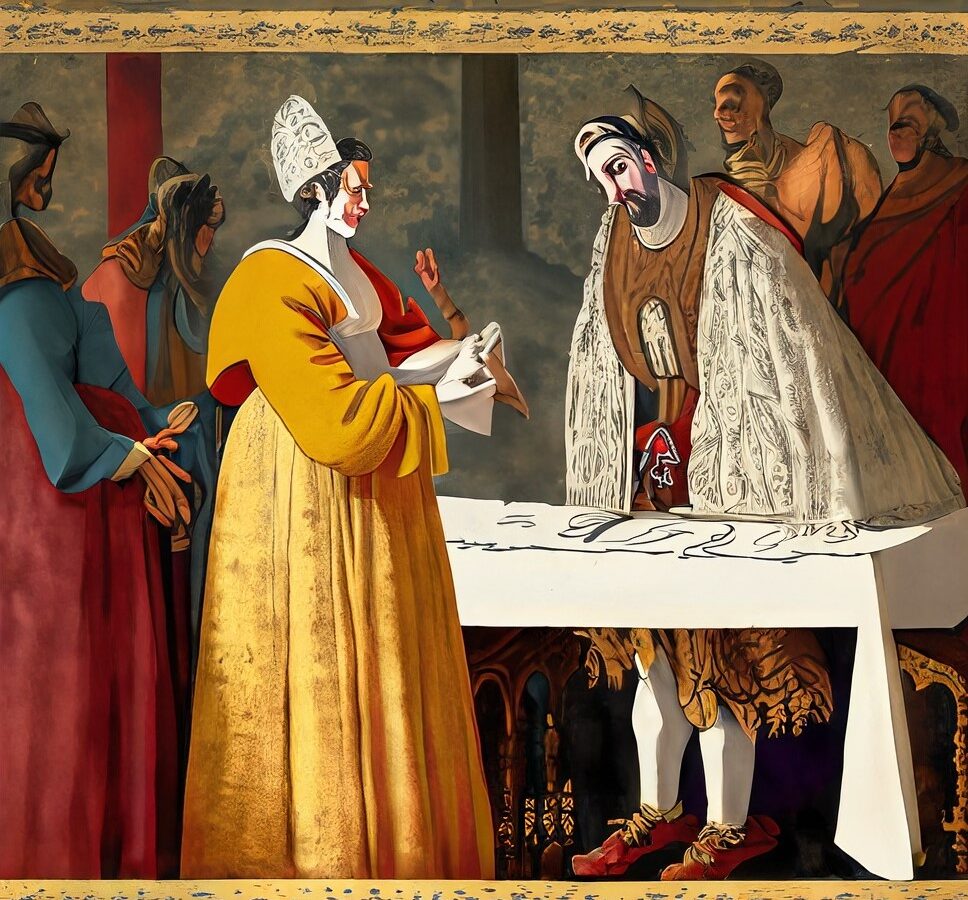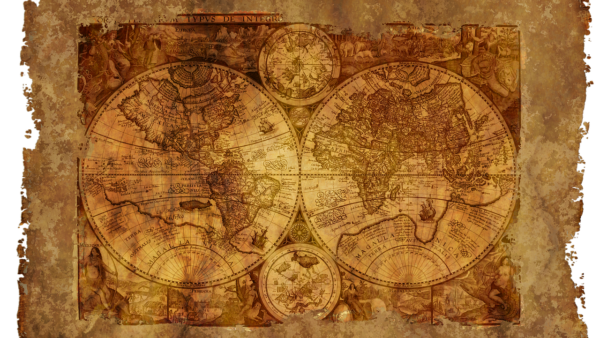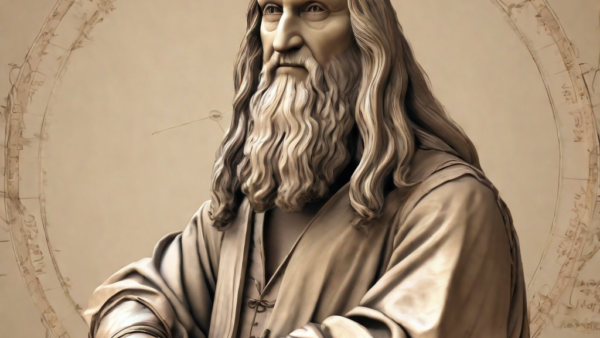Background and Context of The Spanish Inquisition
The Spanish Inquisition arose amidst a complex backdrop of political, religious, and social transformations in 15th-century Spain. These dynamics profoundly influenced its establishment and trajectory, shaping the Inquisition into a powerful instrument of religious control and political consolidation.
Unification of Spain:
The late 15th century saw the unification of the kingdoms of Aragon and Castile through the marriage of Ferdinand II of Aragon and Isabella I of Castile in 1469. This marital alliance marked a crucial step toward the establishment of modern Spain. The union aimed to consolidate authority and centralize power, paving the way for a unified Catholic state.
Reconquista and Religious Identity:
The Iberian Peninsula had been a theatre of struggle known as the Reconquista, a centuries-long campaign by Christian kingdoms to reclaim territory from Islamic rule. By the late 15th century, the Reconquista was nearing its completion as the Catholic Monarchs regained control over the last Muslim stronghold, Granada, in 1492.
Religious identity played a vital role in this unification process. Catholicism became a unifying force, providing a shared religious and cultural foundation upon which the new Spanish state could be built. The Reconquista not only resulted in the expulsion or conversion of Muslim and Jewish populations but also entrenched a distinctly Catholic identity in the emerging Spanish nation.
The fear of religious impurity stemming from the presence of converted Jews (conversos) and Muslims (Moriscos) within the Christian population fueled suspicion and intolerance. Conversos, who had converted to Christianity to escape persecution, were viewed with suspicion by the broader society, often accused of secretly practicing Judaism. Likewise, Moriscos faced similar suspicions of secretly adhering to Islam, despite their outward Christian conversion.
In this climate of religious fervor, the Catholic Monarchs sought to strengthen their newly unified kingdom by promoting Catholic orthodoxy and eradicating any perceived threats to it. The Inquisition became a means to achieve these ends, acting as a tool to enforce religious unity and eliminate potential dissent.
The Spanish Inquisition was, thus, an amalgamation of political, religious, and social factors, born out of the need for religious homogeneity in a recently unified nation. Its origins were deeply embedded in the religious zeal and consolidation of power that characterized 15th-century Spain, making it a significant and enduring institution in European history.
Establishment and Structure of The Spanish Inquisition
The establishment of the Spanish Inquisition marked a significant turning point in both Spanish and European history. It was a consolidation of religious, political, and judicial powers, aiming to preserve Catholic orthodoxy and control religious dissent. In this section, we’ll delve into the formalization, structure, and functioning of the Inquisition, shedding light on its origins and organizational mechanisms.
Papal Approval and Bull of 1478:
The roots of the Spanish Inquisition can be traced back to the late 15th century when Spain was still a patchwork of different kingdoms and territories. In 1478, at the request of the Catholic Monarchs, Ferdinand II of Aragon and Isabella I of Castile, Pope Sixtus IV issued a papal bull called “Exigit Sinceras Devotionis Affectus.” This bull granted the authority to the monarchs to establish and operate the Spanish Inquisition within their realms. The papal bull was a response to the monarchs’ concern about the perceived threat to the Catholic faith posed by heretics and false converts.
The bull provided Ferdinand and Isabella with the authority to appoint inquisitors who would act on behalf of the Church. This collaboration between the monarchy and the Church was significant, as it blended religious and secular authority, effectively solidifying the power structures of the emerging Spanish state. The monarchs and the Church saw the Inquisition as a means to enforce religious orthodoxy and strengthen their authority.
Structure of the Inquisition:
The Spanish Inquisition was structured in a hierarchical and organized manner. At the apex of the Inquisition was the Grand Inquisitor, who had the authority and responsibility to oversee all the operations of the Inquisition across Spain. The first Grand Inquisitor was Tomas de Torquemada, a Dominican friar known for his zealous approach to upholding Catholic orthodoxy.
Underneath the Grand Inquisitor were regional tribunals scattered throughout the kingdom. These tribunals were the primary units of operation and were responsible for conducting investigations, trials, and implementing punishments. Each tribunal was headed by an inquisitor-general who supervised the inquisitors and officials within that region.
The inquisitors were key figures within the Inquisition. They were appointed by the crown but were required to be confirmed by the Pope. Their role was to investigate individuals suspected of heresy or religious nonconformity. They held immense power, including the ability to arrest, prosecute, and pronounce judgments on those accused. The inquisitors were often drawn from the ranks of the clergy and were chosen for their strong religious convictions and loyalty to the crown.
Additionally, each tribunal had a council, known as the Junta de Fe, which advised the inquisitor-general. This council consisted of theologians, canonists, and other experts in religious matters. The Junta de Fe played a crucial role in shaping the policies and decisions of the Inquisition.
Operations and Procedures:
The operations of the Inquisition were characterized by secrecy, fear, and a legal process distinct from the typical legal systems of the time. The accused were often kept in the dark about the charges against them and the identities of their accusers. The inquisitors relied on a network of informers to gather information about possible heretical activities.
Once an individual was accused of heresy, they were summoned for questioning. The accused were subjected to intense interrogation, often involving the use of torture, to extract confessions. The use of torture was justified as a means to save the soul of the accused by encouraging repentance and revealing the truth.
The trial itself lacked many of the fundamental rights we associate with modern legal systems, such as the right to legal representation, the ability to confront accusers, and the right to remain silent. The Inquisition operated on the assumption of guilt, and the burden of proof rested heavily on the accused to prove their innocence.
Financing and Support:
The financing of the Inquisition was a complex affair. Initially, the Catholic Monarchs provided financial support, but later, the Inquisition became financially self-sufficient. It imposed fines and confiscations on those found guilty of heresy, generating a significant portion of its operating funds. The seized assets were often distributed among the Church, the crown, and the Inquisition itself.
In conclusion, the establishment and structure of the Spanish Inquisition were deeply intertwined with the political and religious dynamics of late 15th-century Spain. The collaboration between the monarchy and the Church resulted in a powerful institution that exerted immense influence over the lives of individuals, shaping the religious and social fabric of Spain for centuries.
Targets and Persecution of The Spanish Inquisition
The Spanish Inquisition, conceived in a climate of religious fervor and political consolidation, primarily targeted specific groups within society. These targeted individuals were accused of heresy, often based on their religious heritage or beliefs, which were perceived as threats to the Catholic faith and the stability of the newly unified Spanish state.
Targeted Groups
Conversos: A Legacy of Suspicion
The Conversos, also known as New Christians or Marranos, were individuals of Jewish heritage who had converted to Christianity. Their conversions were often compelled by the forced expulsion of Jews from Spain in 1492. Despite their conversions, Conversos faced deep-rooted suspicions regarding the sincerity of their faith. Many Old Christians questioned the authenticity of their conversions, believing that they continued to practice Judaism in secret. The Inquisition, acting on these suspicions, subjected Conversos to intense scrutiny and persecution.
The Inquisition utilized a network of informers and spies to monitor Conversos’ activities. Accusations of heresy often arose from the secrecy surrounding their rituals and practices, interpreted as evidence of hidden Judaism. Conversos were subjected to interrogations and forced to provide names of other suspected heretics, creating a culture of fear and betrayal within their own communities.
Moriscos: The Struggle for Identity
The Moriscos were Muslims and their descendants who had converted to Christianity, often under duress during the Reconquista. Similar to Conversos, they faced suspicions about the sincerity of their conversions. Despite outward displays of Christian faith, Moriscos were accused of maintaining Islamic practices in private. This perception was exacerbated by cultural differences and a lack of complete assimilation into Christian society.
The Inquisition targeted Moriscos, employing similar methods used against Conversos. Surveillance was pervasive, and informers were abundant, reporting on any signs of deviation from Christian orthodoxy. Moriscos were pressured to abandon their cultural practices and adopt Christian customs. The inability to conform fully often led to accusations of heresy and subsequent persecution.
Others: Wider Nets of Suspicion
Apart from Conversos and Moriscos, the Inquisition cast a wide net to identify perceived threats to Catholicism. Protestantism, considered a significant threat to the Catholic Church, was also targeted. The Inquisition sought out individuals suspected of being Protestant sympathizers, missionaries, or individuals who possessed Protestant literature. Intellectuals, freethinkers, and those with views challenging the Church’s doctrines were also on the Inquisition’s radar. The fear of being accused and subjected to the Inquisition’s scrutiny resulted in a climate of self-censorship and suppression of differing beliefs.
Methods and Punishments
Inquisitorial Procedures: A Ruthless Inquisition
The Spanish Inquisition employed a variety of methods to identify heretics and secure confessions. Accusations were often made anonymously, making it difficult for the accused to confront their accusers. Once accused, individuals were arrested and taken to the tribunal for questioning.
Interrogations were intense and often involved the use of torture to extract confessions. Torture methods included the infamous “strappado,” where the accused’s hands were tied behind their back and then raised, dislocating their shoulders. Other methods included waterboarding and the “rack,” a stretching device causing immense pain. The goal was to break the individual’s will and obtain the desired confession.
Public Spectacle of Punishment

The punishments for those found guilty were intended to serve as a deterrent and a public spectacle. Penalties ranged from fines and confiscation of property to public floggings and public humiliation. Some individuals were paraded through the streets, wearing a sanbenito (a penitential garment) adorned with symbols of heresy.
For severe cases, execution awaited the convicted heretics. The most common form of execution was burning at the stake, a gruesome public event designed to both punish the individual and intimidate the community. The fear instilled by these punishments contributed to an environment of conformity and orthodoxy.
Legacy and Decline of The Spanish Inquisition
Legacy
The Spanish Inquisition’s legacy is a complex and dark chapter in Spanish and European history, leaving a profound and lasting impact on society, culture, and religious identity.
Religious Repression and Fear:
The Spanish Inquisition instilled a climate of fear and suspicion within Spanish society. Fear gripped individuals, preventing them from expressing religious views that differed from the established norms or engaging in activities that could be deemed heretical. This pervasive fear had a chilling effect on intellectual, social, and religious freedoms.
Religious Uniformity and Social Control:
One of the primary goals of the Inquisition was to enforce religious uniformity and control over the populace. The fear of persecution drove many to conform outwardly to Catholicism, even if their beliefs or practices differed privately. This led to a façade of religious homogeneity within society.
Persecution and Discrimination:
The Inquisition targeted various groups, including conversos and Moriscos, leading to widespread discrimination and persecution. Even if they were ultimately declared innocent, the Inquisition often ruined the lives of those accused. The scars of this discrimination persisted through generations.
Impact on Jewish and Muslim Communities:
The Jewish and Muslim communities in Spain suffered immensely due to the Inquisition. Many Jews and Muslims faced forced conversions to Christianity and subsequent suspicion of secretly practicing their original faith. The Inquisition disrupted and disintegrated these communities, resulting in a loss of cultural and religious heritage.
Cultural and Artistic Stifling:
The climate of fear and censorship impacted artistic and cultural production. Artists and writers often self-censored their work to avoid potential accusations of heresy. This stifling of creativity had long-lasting consequences on the development of Spanish art, literature, and culture.
Decline and Abolition
Enlightenment and Changing Ideals:
The Enlightenment in the 18th century brought about a shift in societal values, emphasizing reason, individual rights, and religious tolerance. Enlightenment thinkers criticized the Inquisition’s methods and principles, advocating for a more open and rational society.
Weakening of Royal Support:
As the Enlightenment ideals gained traction, support for the Inquisition waned among the ruling elite. The monarchs and other influential figures began to question the necessity and morality of the Inquisition, contributing to its gradual decline.
Napoleonic Wars and Occupation of Spain:
During the Napoleonic Wars, particularly in the early 19th century, Napoleon Bonaparte’s forces occupied Spain, exerting significant influence over the region. The occupation weakened the Spanish Inquisition, and the subsequent restoration of the Spanish monarchy did not fully rejuvenate its powers.
Formal Abolition:
In 1834, the Spanish government, under the regency of Maria Christina of the Two Sicilies, officially abolished the Inquisition. The Inquisition’s decline and eventual abolition marked the end of its formal existence as an institution.
The Spanish Inquisition’s legacy is one of fear, oppression, and religious persecution. It profoundly impacted Spanish society, stifling freedom of thought and expression for centuries. Its decline was a result of changing societal values, external influences, and a shift away from the religiously intolerant practices that characterized the era. The abolition of the Inquisition marked a step towards a more tolerant and open society, acknowledging the need for religious freedom and individual rights…





